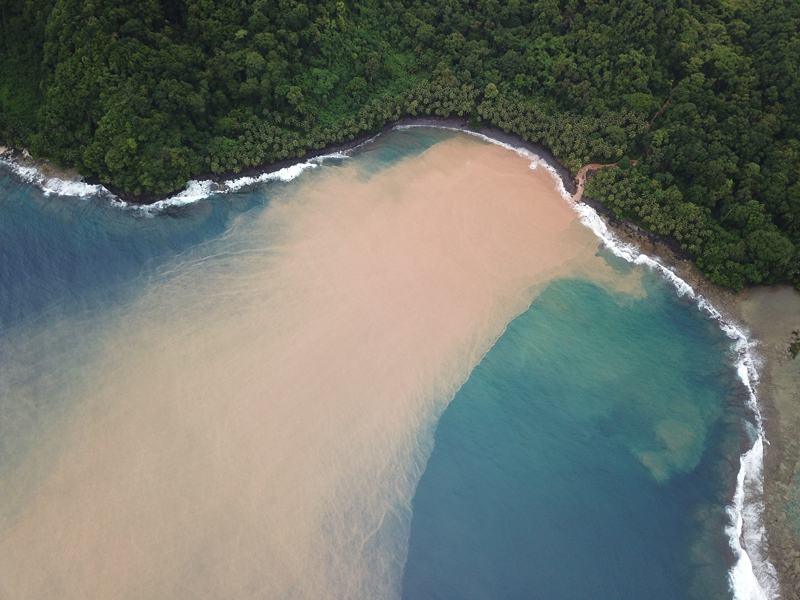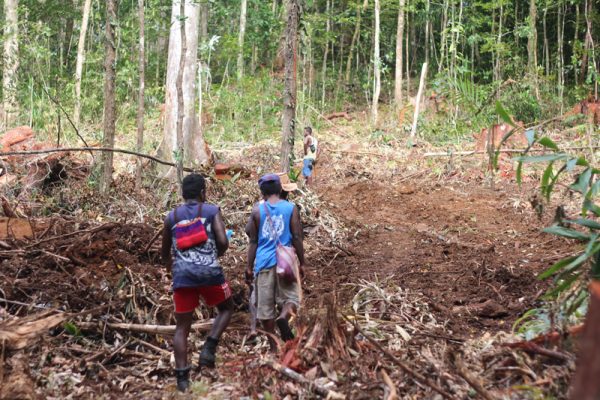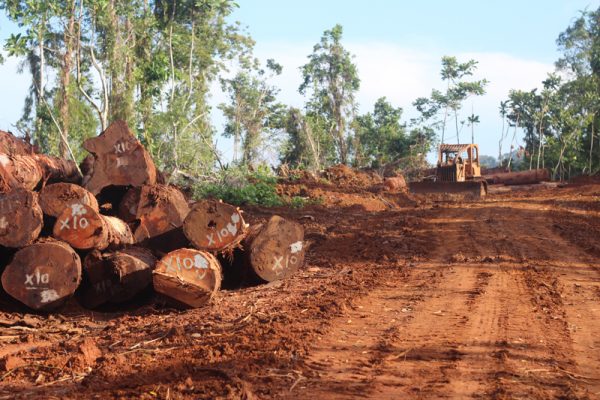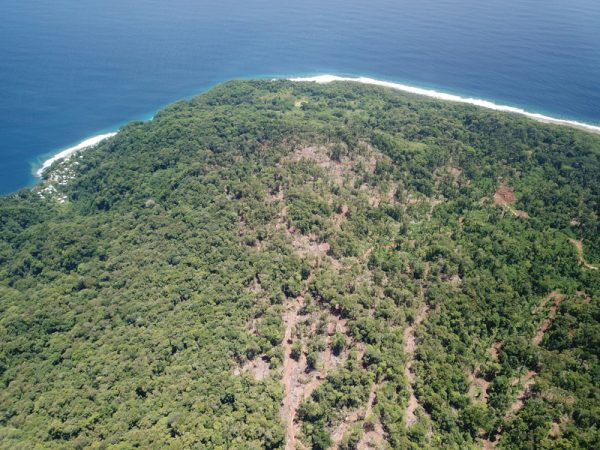Logging in Tropical Regions Impacts Water Quality Downstream

River plume draining into the sea full of sediment from upstream logging activity in Western Province, Solomon Islands. (Credit: Wade Fairley)
As people clear and log tropical forests around the world, scientists from the University of Queensland (UQ) in Australia, the Wildlife Conservation Society (WCS), and other advocacy organizations have investigated the impact of that clearing and logging. Now, they have concluded that among the devastating consequences caused by the loss of native forests is reduced water quality in areas downstream from logging activities.
Protecting a threatened area
The country of Solomon Islands lies to the east of Papua New Guinea, a cluster or string of six larger islands and more than 900 smaller islands in Oceania. This part of the world, known for its pristine natural beauty, is changing fast. Commercial logging makes up about 18 percent of Solomon Islands government revenue, for example, not to mention the biggest source of formal sector jobs and at least 60 percent of exports.
However, the social and ecological ramifications of native forest loss are both serious and poorly documented. This recent work on the impact of logging on water quality is part of an attempt to understand—before it’s too late—whether best management strategies are enough to prevent water quality problems and soil erosion at unsustainable levels.
Postdoctoral Research Fellow Dr. Amelia Wenger of the UQ School of Earth and Environmental Sciences consulted with WCS Melanesia Director Dr. Stacy Jupiter and corresponded with EM about the study, which focused on Kolombangara Island.
“We chose Kolombangara as a study area because local organizations have been mobilizing the support of Kolombangara residents and landowners to agree to develop a protected area for the forests above 400 meters on the land under customary title,” explains Dr. Wenger.
“The work builds on a decade of dedicated effort by a local community-based organization (Kolombangara Island Biodiversity Conservation Association), supported by a local NGO (Ecological Solutions – Solomon Islands) to protect the intact high elevation forests on Kolombangara Island and the broader watersheds. The science was designed to support this initiative and is part of a larger project to understand how land use change can impact downstream systems—both freshwater and coral reef communities—through increased sedimentation associated with clearing the forest. The first step in this process is to estimate how much more sediment will get into waterways under different scenarios of forest clearing.”

Community rangers inspecting recent clearing from logging activity in Western Province, Solomon Islands. (Credit: Joe McCarter)
To date, most of the landowners have been supportive of the development of a protected area. However, there are some who have conflicting ideas.
“We hope to be able to use the results from the study to communicate the potential negative impacts on drinking water and agricultural production if the area was logged to help convince those presently opposed to the protected area development that protection will provide long-term and equitable benefits to all people on Kolombangara,” states Dr. Wenger.
Logging in focus
Part of the issue this research sought to address was whether even well-managed logging operations are sustainable. Some are—but not those that clear new forest.
“Some logging operations can be done sustainably and, importantly, provide employment and local livelihood opportunities for local people,” details Dr. Wenger. “For example, on Kolombangara, there is a Forest Stewardship Council (FSC) certified company operating on the island that maintains managed hardwood plantations in a leased fixed term estate covering about 75% of the island. The company’s business ethic is built around sustainability. They are not clearing any new forest and, as part of their FSC status, they are required to maintain the integrity of the forests over 400 meters within their leased estate, as well as several riparian reserves. In addition, the company supports some of the local island residents to develop small-holder timber plantations that are also marketed under their FSC label.”
So, what were the potential consequences of clearing new forests over 400 meters on Kolombangara Island?
“Much of the land above this elevation is very steep, and thus erosion potential from forest clearance is much higher than the lower sloped areas at lower elevations below 400 meters,” clarifies Dr. Wenger. “31.2% of the land above 400 meters has a slope between 15 and 25° compared to only 15.9% of the land below 400 meters.”
The team found that the impacts of land clearing for logging in Solomon Islands will compromise land integrity for future agricultural uses, reduce access to safe drinking water, and degrade downstream ecosystems—problems that are only getting worse as time goes on.

Active logging area on slopes of Kolombangara Island, Solomon Islands. (Credit: Joe McCarter)
“This is already a very serious issue affecting many parts of Solomon Islands and in other tropical forested nations around the world,” remarks Dr. Wenger. “In Solomon Islands, drinking water sources have been impacted in particular when the standards in the Code of Logging Practice are not followed. In addition, at certain sites, local residents have suggested that sedimentation resulting from logging operations has smothered coastal shellfish beds, which are an important food resource.”
Immediate action on this issue is important, which is why the researchers recommend the declaration of the protected area. This would add explicit controls over land clearing and with it, significant levels of legal protection.
“Kolombangara’s forests above 400 m on customary lands are under constant threat from illegal logging incursions, so there is some urgency in securing the land as a protected area,” adds Dr. Wenger. “Under Solomon Islands law, logging and mining are prohibited within all nationally declared protected areas.”
The research in this case was designed to shed light on the complex environmental problems connected to logging activities despite the lack of available data in the region.

Aerial view of forest loss from recent logging activity in Western Province, Solomon Islands. (Credit: Wade Fairley)
“The modeling platform used in our study was purpose-built for environmental analysis in data-limited environments,” Dr. Wenger explains. “The novel approach used in our study was to combine two different models: the Natural Capital Project’s Integrated Valuation of Ecosystem Services Sediment Delivery Ratio Model (InVEST SDR version 3.2) and the Soil-Water-Assessment Tool (ArcSWAT, 2012.10.19). The coupling of these two models meant that we could overcome some of the data requirements for the SWAT model by using the outputs of the InVEST model, while at the same time, leveraging the capabilities of the SWAT model to assess changes in water quality with increased logging.”
The bottom line? The team found that when land-clearing reached 40 percent in their model, almost 40 percent of the time safe drinking water standards were exceeded. This startling result was true despite the implementation of and adherence to best practices for logging. The team hopes sharing the potential impacts of clearing native forests gleaned from their work will help officials achieve buy-in on the protected area.
Top image: River plume draining into the sea full of sediment from upstream logging activity in Western Province, Solomon Islands. Credit: Wade Fairley)




0 comments